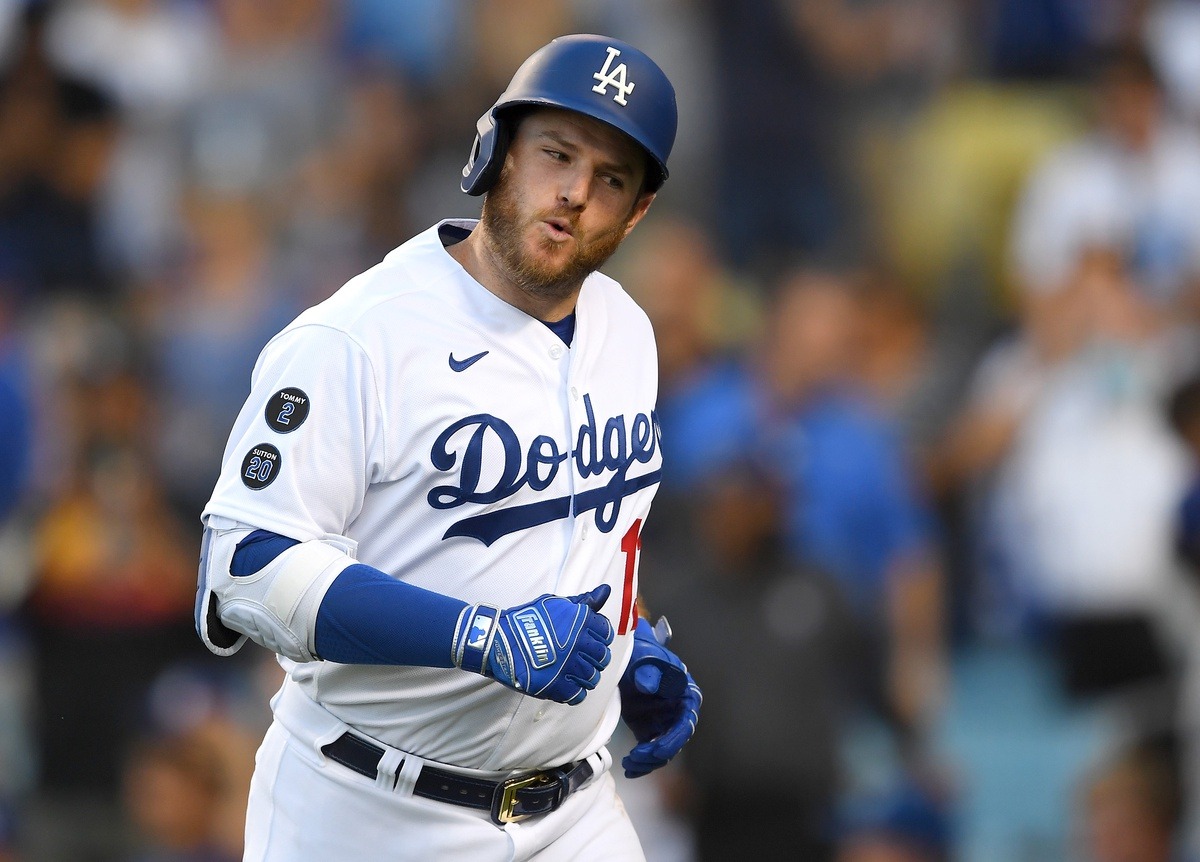© 2026 ALLCITY Network Inc.
All rights reserved.

Having already won seven consecutive games against the Rockies and up 7-2 in the ninth with one of the best bullpens in the National League, the Dodgers were poised to pull within one game of the first-place San Francisco Giants.
Max Muncy wasn’t about to pass up an opportunity to put the final nail in Colorado’s coffin, one that would also pad his statistics a little bit.
Recently promoted LHP Zac Rosscup came out jogging from the right-center field fence and looked to build upon an outstanding season (17.1 IP, 1 ER) with the Albuquerque Isotopes in the pitcher’s nightmare formerly known as the Pacific Coast League.
Following two straight pitches outside the zone, Rosscup placed a slider over the middle of the plate and Muncy had his second home run in as many innings, the sixth multi-homer game of his career.
The slugger’s secret: drinking lots of water.
“My very first trip to Denver, I actually got really sick because I don’t think I had enough water,” Muncy intimated. “And that was miserable. So every time I come here, I always make sure to just crush as much water as I can.”
It’s a common response by players of all 30 MLB clubs for navigating the effects of altitude on a weekend spent one mile above sea level. For professional athletes with peak abilities, it sounds surprising to hear them speak about environment as if surviving it as opposed to succeeding in it.
“It’s a little harder to recover here. So you got to do everything you can to limit some of the stuff you do,” the All-Star first baseman said of his approach to visiting Colorado. “Just be smart about how many swings you take and how much effort to give. You can be smart about it.”
Fellow corner infielder and All-Star Justin Turner takes it one step further in regards to a series at Coors Field.
“This isn’t a city that you come to and you take batting practice and 100 ground balls every day. You get your work in and you get off the field to try to spend the least amount of time out there as possible,” Turned shared during the All-Star break.
Staying hydrated – “Less alcohol, more water,” as one American League representative said last week – and getting as much rest as possible are universal approaches for handling altitude sickness and overcoming the elements in the Mile High City.
While impact on the body takes precedence over everything, another factor that actually decides all 81 games at Coors Field and as it relates to every pitch thrown is the movement of a baseball, a well-know fact dating back to the Blake Street Bombers.
“Pitches are definitely different here,” Muncy acknowledged. “Breaking balls don’t spin like they’re supposed to. The changeups actually move more than they’re supposed to here. The pitches do weird things, but you’ve got to adjust to it and when we go back home, we’ve got to readjust.”
Even after stepping aboard a chartered flight and landing in any other MLB city across the U.S. and Canada, the oxygen may be more plentiful, but something still lingers. Something persists.
The Coors Field hangover.
And readjusting has become the biggest challenge for anyone plying their trade in LoDo, including visiting teams.
Two years ago, Charlie Blackmon set about combating this through use of a high-spin rate machine that allowed him to better recognize the movement of pitches on the road in order to aid in adapting to the new location thousands of miles closer to sea level. It hasn’t made a huge dent in the home-road splits for the Rockies, but it’s been a start.
For an organization like the Dodgers with countless members of the analytics department, the high-spin machine has been a commonplace strategy for quite some time. And it’s one not associated with any other ballpark in the game.
“Usually when we come here, I’ll get on a breaking ball machine here to just kind of feel the difference and then as soon as we go somewhere else, we’ll get right back on a breaking ball machine to kind of see the difference and get a feel for what the ball’s going to do.”
While this strategy has been effective for all clubs utilizing this strategy, it doesn’t necessarily guarantee immediate success in the next series. Following a three-game set in Colorado, Muncy and Turner – players that haven’t taken at-bats anywhere other than Coors Field for over a week thanks to hosting the 2021 MLB All-Star Game – the duo clubbed back-to-back home runs on Monday night in Los Angeles.

Dumb luck? Probably, or so Muncy tells it. The turnaround can take much longer than just an afternoon in the batting cage. The timespan for the lag is somewhat indeterminable for each player.
“That’s a tough question,” pondered the 30-year-old. “It’s at least a game (to adjust), but it’s probably more like two to three, which unfortunately for road teams is right when you’re getting out of there.”
An extra-inning, comeback victory on Sunday for the Rockies helped delay the Dodgers ascension to the top of the NL West as a Giants loss left the door open. On Monday, the teams with the two best records in the game faced off with a tie for first place on the line.
Grandview High’s Kevin Gausman, in contention for the Cy Young Award, was chased early by Los Angeles following 80 pitches in just three innings. In the end, San Francisco maintained their crown with four runs against that vaunted ‘pen to win 7-2. The only two runs scored by the Dodgers: those home runs by Muncy and Turner.
Perhaps they should share the secret a bit more.
Comments
Share your thoughts
Join the conversation




